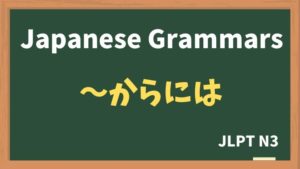
Explanation:〜も〜ば、〜も
fa-check-circleMeaning
"〜も〜だし、〜も〜である"
Used to present contrasting elements or situations. It pairs two different, often opposing, ideas or situations to show that both exist or are true.
fa-check-circleForm
N1も + V(バ形)+ N2も
N1も + イAければ + N2も
N1も + ナAなら + N2も
N1も + Nなら + N2も
fa-check-circlePoints
- Contrast or Comparison: This structure is used to highlight contrast or the coexistence of different, often opposite, situations, qualities, or opinions.
- Balanced Presentation: It gives a balanced view by showing both sides of a situation or two different perspectives.
- Commonly Used for Comparisons: This expression is often used when discussing opinions, experiences, or characteristics that can be positive/negative or enjoyable/unpleasant.
fa-check-circleJLPT Level
N3
Sample sentenes
パーティーが好きな人もいれば、嫌いな人もいる。
Some people like parties, while others dislike them.
飲み会が好きな人もいれば、嫌いな人もいる。
Some people like drinking parties, while others dislike them.
人生は楽しいこともあれば、辛いこともあります。
In life, there are both fun times and tough times.
今、学校は休みなので、起きる時間は決まっていません。早く起きることもあれば、遅く起きることもあります。
Since I'm on school break now, I don't have a set wake-up time. I sometimes wake up early, and sometimes I wake up late.
世の中にはビジネスで成功する人もいれば、失敗する人もいる。
In the world, there are people who succeed in business, and there are those who fail.
Vocabulary
| Japanese |
English | |
| 人生 | じんせい | life |
| 辛い | つらい | tough |






